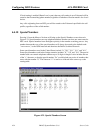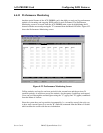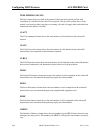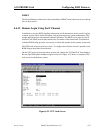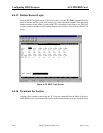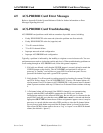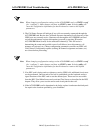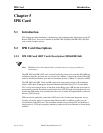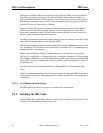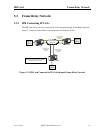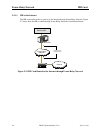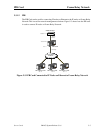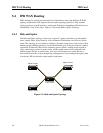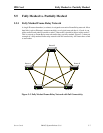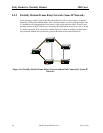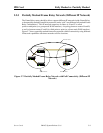
5-2 IMACS System Release 5.1.6 Server Cards
Model No.
Running Head
IPR Card Descriptions IPR Card
IPR supports SNMP for Ethernet, Frame Relay, IP and Routing MIBs. It uses the standard
Ethernet encapsulation, utilizing 14 bytes Ethernet Header: Source Ethernet Address (6
bytes), Destination Ethernet Address (6 bytes), and a Protocol Type (2 bytes). IPR supports
RIP (Routing Information Protocol, RFC 1058) for dynamically discovering IP routes from
adjacent IP routers on Frame Relay or Ethernet.
The use of simple filtering and forwarding decisions based on the physical layer address
allows less processing time per packet. Because of this, bridging provides better WAN
bandwidth, compared to routing. IPR will forward packets matching an entry in the MAC
addresses table, configured manually by the user.
The IPR will automatically determine when to Bridge packets and when to route them, based
on the MAC destination address in the Ethernet header.
IPR will forward packets matching an entry in the addresses table, configured manually by the
user. In addition, LAN broadcasts will be forwarded on all bridge PVCs. No spanning tree or
learning algorithms is supported.
IPR will forward Ethernet and 802.3 packets regardless of the upper level protocol: IP
DECnet, SNA, AppleTalk, etc. Bridging function is completely “transparent” at IP level, there
is no changes to IP address or any other information in the IP header. When accessing the IPR
itself, packets will be exchanged in the format as specified in the “encapsulation” setting for
the Ethernet port.
The WAN interface is standard encapsulation of Ethernet/802.3 over Frame Relay (RFC
1490).
IPR will provide the capability to deliver IP packets to the CPU hosting the IPR. Assuming an
average frame of 256 bytes, IPR maintains LAN to WAN (and WAN to LAN) throughput of
2.048 Mbps.
5.2.1.1 Card Jumpers/Switch Settings
The IPR card does not have any jumpers or switches on its motherboard.
5.2.2 Installing the IPR Cards
Insert the IPR 10B2 or IPR 10BT card into one of the server card chassis slots (P1 to P3). The
system can accommodate up to three server cards.



